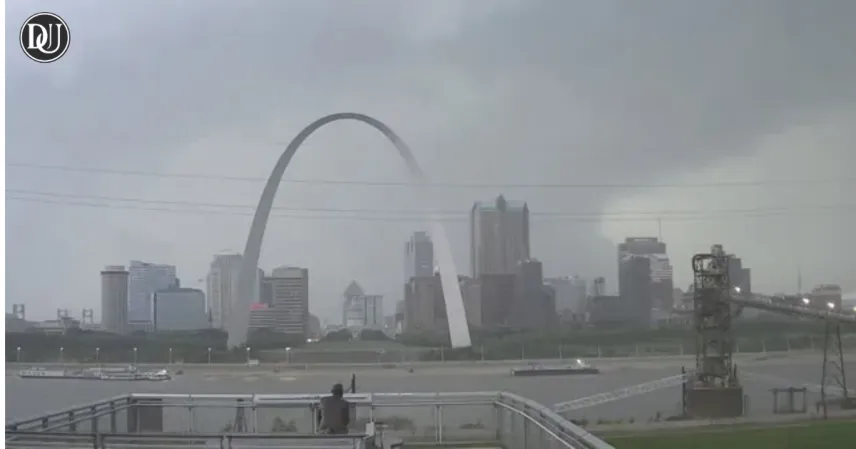On May 16, 2025, a powerful st louis tornado tore through the metropolitan area, causing widespread destruction, claiming at least four lives, and prompting urgent warnings across southeastern Missouri. The massive twister was first spotted near Clayton around 2:30 p.m. CDT and rapidly moved through neighborhoods including Forest Park, University City, and Concordia Seminary, leaving behind significant damage.
Residents were urged to take shelter immediately as the st louis tornado was accompanied by destructive winds, large hail, and flying debris. Videos shared on social media captured the terrifying sight of the twister touching down and ripping through parts of the city. Emergency responders worked swiftly to rescue people trapped in collapsed buildings, including at Centennial Christian Church, where part of the structure crumbled, leading to at least one fatality during rescue efforts.
The St. Louis Zoo also sustained damage, though all animals and staff were reported safe as the facility closed for safety assessments. Power outages impacted thousands of homes across Missouri and neighboring states, adding to the challenges faced by emergency crews.
This st louis tornado was part of a larger severe weather system affecting the Midwest and Appalachia, with additional tornadoes reported in Illinois and Wisconsin, dust storms near Chicago, and widespread power outages across Michigan, Indiana, Illinois, and Kentucky. The National Weather Service (NWS) issued multiple warnings and continues to monitor conditions, cautioning that severe weather, including the possibility of further tornadoes and damaging winds, may persist through the weekend.
Meteorologist Marshall Shepherd emphasized the vital role of the National Weather Service in protecting communities from such devastating storms. The NWS’s timely alerts, real-time updates, and continuous monitoring are crucial in helping residents take life-saving precautions during the st louis tornado and similar events. Shepherd noted that the NWS’s mission goes beyond forecasting—it is about enabling resilience and preparedness in the face of unpredictable weather.
In the aftermath of the st louis tornado, the NWS is assessing damage and refining its forecasting models to improve future warnings. Their efforts have undoubtedly helped reduce casualties and guided emergency responses during the crisis.
Authorities are advising residents in affected areas to remain vigilant, follow official weather updates, and adhere to safety instructions as recovery efforts continue. Emergency crews are working tirelessly to restore power, clear debris, and assist those displaced by the tornado’s destruction.
The st louis tornado serves as a stark reminder of the destructive power of nature and the importance of advanced weather monitoring systems. As communities come together to rebuild, the lessons learned from this event underscore the critical need for preparedness and the lifesaving impact of timely weather warnings.










